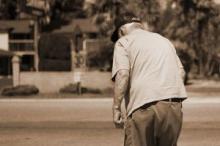The study analyzed three cycles of data on 170,000 self-described aging lesbian, gay and bisexual (LGB) adults from the California Health Interview Survey. The analysis looked at ages 50-70 years to get a snapshot of the social and health issues that will follow LGB adults into their elderly years. (Transgender people, who comprise the “T” in the acronym LGBT, were not included in the study.)
Half of aging gay or bisexual men live alone compared with 13% of heterosexual men. More than one in four aging lesbian or bisexual women live alone compared with one in five heterosexual women. Rates of heart disease in LGB adults (12% in men and 8% in women) did not differ significantly from rates in straights, nor did rates of being uninsured — 8% of LGBs and 11% of heterosexuals lacked health insurance.
The presence of some other chronic diseases did differ significantly. Gay or bisexual men were 17% more likely to have hypertension and 28% more likely to have diabetes compared with heterosexuals. In the LGB cohort, rates of physical disability were 24% higher in men and 32% higher in women, reports of fair or poor health were 50% higher in men and 26% higher in women, and reports of symptoms of psychological distress were 45% higher in men and 35% higher in women compared with heterosexuals. Data from 2007 in the study’s database suggest that mental and social stressors on LGB adults often are rooted in stigma and discrimination.
Who will care for elderly LGB folks and their health problems, or pay for care? Recent interest in building LGBT-friendly retirement communities and assisted-living facilities may help. One community in New Mexico that offers independent, transitional or assisted living serves a mixture of gay and straight residents. The facilities feature a “Truman Capote library,” a “Billie Jean King fitness center,” “Garbo’s” restaurant and social events like a monthly drag show, one resident told me. But these projects, like all real estate, have been hit hard by the economic recession, and some are so desperate for buyers that they are afraid to advertise as “gay friendly” in fear of deterring straight clients.
This year for the first time, people who married or became Domestic Partners with someone of the same sex under their state’s laws had to follow complicated federal tax regulations delineating joint earnings and property, but they are only allowed to file individual (not joint) tax returns. Many ended up paying more than before in federal taxes (not to mention extra fees to accountants to help figure out the regulations). Yet Medicaid and Social Security do not recognize same-sex partners, so they can’t count on those federal safety nets in the same way that heterosexuals do if they face financial hardships.
But the outlook may not be quite as dire as all of this implies. Nearly two-thirds of LGBT Boomers said they have “chosen family”( a group of people they consider family even though they are not legally or biologically related), according to the 2010 report Still Out, Still Aging: The MetLife Study of Lesbian, Gay, Bisexual and Transgender Baby Boomers, conducted in collaboration with the American Society on Aging. In that study, just over half of LGBT adults (compared with 39% of heterosexuals) said they have total or near-total confidence that they will be treated with dignity and respect by health care professionals at the end of life, “perhaps because they have more experience in demanding respect when it is not forthcoming,” the authors suggest.
There are an estimated 2.5-3 million LGBT older adults in the United States, a population that is expected to double over the next 20 years. Physicians should be aware of these trends, and may want to familiarize themselves with resources such as the National Resource Center on LGBT Aging and Services and Advocacy for Gay, Lesbian, Bisexual and Transgender Elders (SAGE).
Here come those Boomers. And some of them are in drag.
–Sherry Boschert (@sherryboschert on Twitter)

